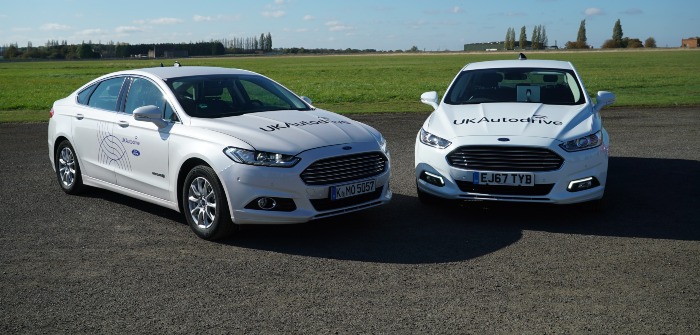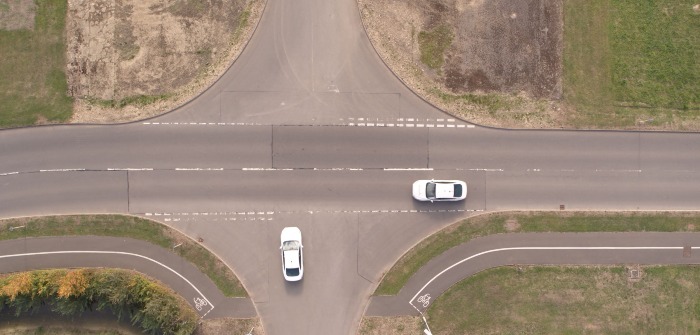Ford is exploring the possibility of a world without traffic lights, junctions and intersections thanks to connected vehicle technology that would be able to choreograph cars for free-flowing traffic.
The car maker is trialling Intersection Priority Management (IPM) on the streets of Milton Keynes in the UK that employs vehicle-to-vehicle (V2V) communication to coordinate vehicles approaching the intersection with a suggested optimum speed to enable cars to perfectly pass each other without the need for stopping.

The technology takes inspiration from how pedestrians adjust their speed to negotiate busy crowds and avoid collisions with others crossing their path. For cars, not only would it avoid unnecessary stop-start journeys, it would also speed up travel times, emergency response times and increase safety at junctions.
“We know that intersections and traffic lights can be a real bugbear for many drivers,” said Christian Ress, supervisor, Driver Assist Technologies, Ford Research and Advanced Engineering.
“With the connected car technology we have been demonstrating this week, we envisage a world where vehicles are more aware of each other and their environment, enabling intelligent cooperation and collaboration on the roads – and around junctions.”
The test vehicles had human drivers behind the wheel, however Ford believes development of its IPM technology would benefit self-driving cars of the future, which wouldn’t then have to learn how to handle complex road situations such as traffic lights and junctions.


